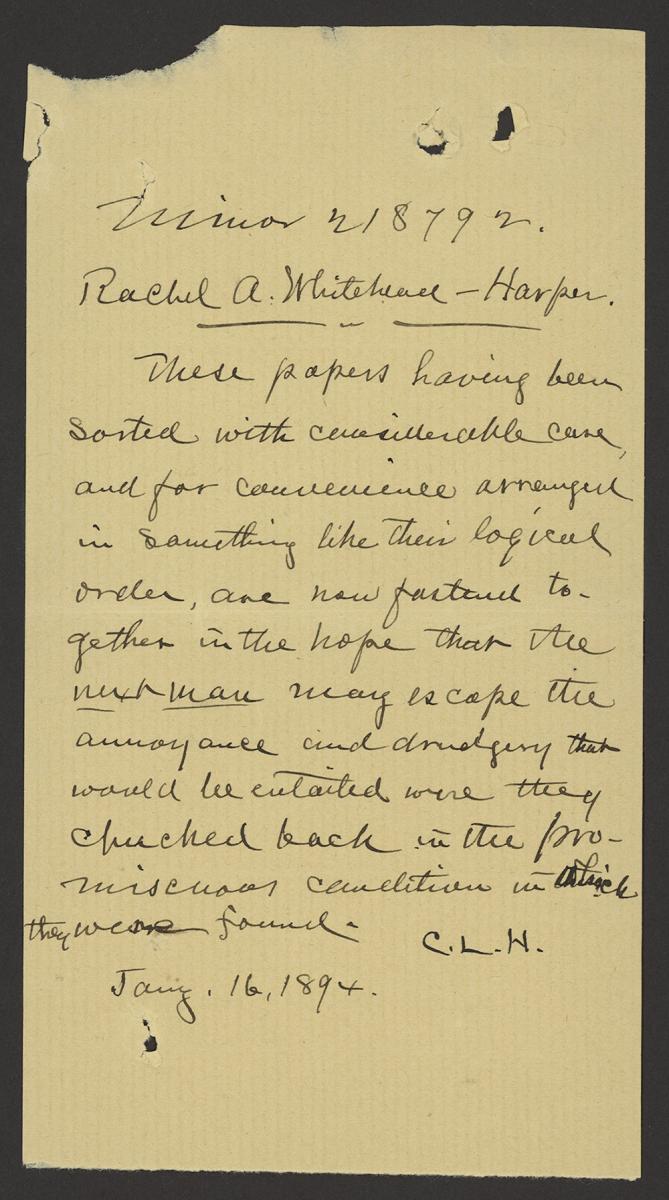
Logical Order
A Pension Office Clerk's Lament
Summer 2013, Vol. 45, No. 2 | Pieces of History
At the National Archives, and almost any other archival institution, one of the principal rules for using original records is to keep the records the same order in which they are given to you.
Maintaining order over documents has long been a primary concern of record keepers. When we’re able to productively use a collection of records, we’re benefiting from the care taken by unknown prior custodians. Their work is usually invisible, but in the case of our featured document, a clerk’s voice breaks through from the 19th century.
At the front of the Civil War widow’s pension file for Pvt. Stephen Whitehead, a Pension Office clerk wrote:
"These papers having been sorted with considerable care and for convenience arranged in something like their original order, are now fastened together in the hope that the next man may escape the annoyance and drudgery that would be entailed were they chucked back in the promiscuous condition in which they were found."
"Jany. 16, 1894. C.L.H."
The clerk’s frustration is understandable in light of the complexity of the Whitehead pension case. In 1860, Whitehead married Charian Lowrey but left her before their daughter was born in 1861. Later that year, Whitehead married a woman named Sarah, and two years later, Charian married another man. After Whitehead died in 1865, Charian applied for and received a widow’s pension. But in 1870, Sarah also received a pension based on Whitehead’s service.
The Pension Office’s investigation of the Whitehead claims continued until 1917, after Sarah’s death and Charian’s remarriage to a third husband. The final judgment: pension denied to Charian because “you contracted more than one marriage after the death of the soldier.”
Penciled notes on several pages in the file—accompanied by question marks and exclamation points—look like they may be in C.L.H.’s hand, but there is no proof.
The rare appearance by “C.L.H.” reminds us that the existence of documents for our use today depended on the care and attention of record keepers in the past.
